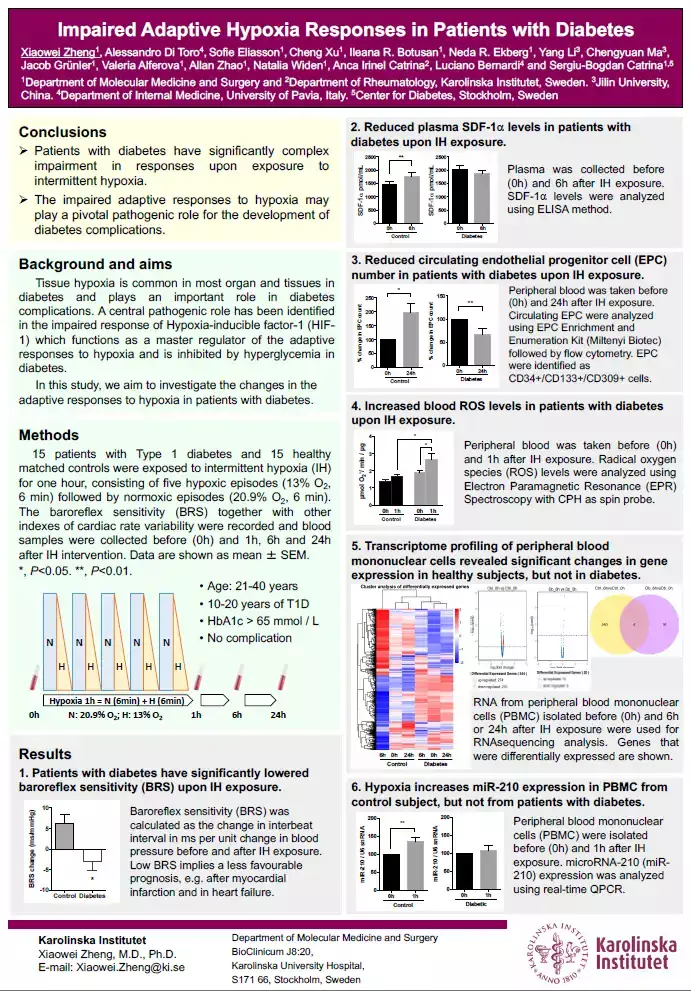Poster 24 - Xiao-Wei Zheng, Growth and Metabolism
MMK Department's Day 2024

Xiao-Wei Zheng, Growth and Metabolism
Title: Impaired Adaptive Hypoxia Responses in Patients with Diabetes
Summary
The main therapeutic challenge in diabetes is represented by the devastating complications of the disease. Tissue hypoxia is common in most organ and tissues in diabetes and plays an important role in diabetes complications. A central pathogenic role has been identified in the impaired response of Hypoxia-inducible factor-1 (HIF-1) which functions as a master regulator of the adaptive responses to hypoxia and is inhibited by hyperglycemia in diabetes. In this study, we aim to investigate the change in the adaptive responses to hypoxia in patients with diabetes.
15 patients with Type 1 diabetes and 15 healthy matched controls were exposed to intermittent hypoxia (IH) for one hour, consisting of five hypoxic episodes (13% O2, 6 min) followed by normoxic episodes (20.9% O2, 6 min). Upon IH exposure, patients with diabetes had significantly lowered baroreflex sensitivity (BRS). Higher plasma SDF-1alpha levels were induced by IH in healthy controls, but not in patients with diabetes. The number of endothelial progenitor cells (EPC) in circulation increased in healthy subjects after IH, but decreased in patients with diabetes. Before IH exposure, patients with diabetes had significantly higher ROS levels in blood than healthy controls. IH did not change ROS levels in healthy controls, but significantly increased ROS levels in patients with diabetes.
Transcriptome profiling of peripheral blood mononuclear cells (PBMC) revealed significant changes in gene expression in healthy subjects, but not in diabetes.
These data showed significantly complex impairment of the responses to hypoxia in patients with diabetes upon exposure to intermittent hypoxia. The impaired adaptive responses to hypoxia may play a pivotal pathogenic role for the development of diabetes complications.
